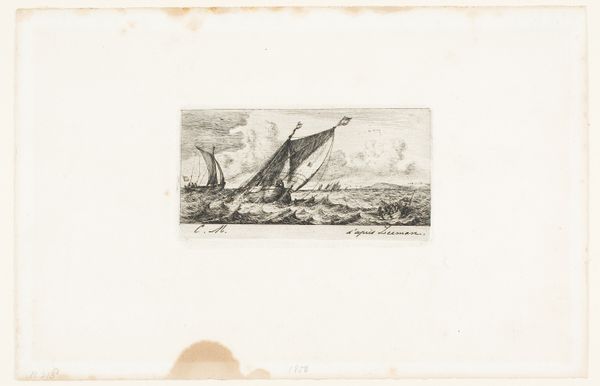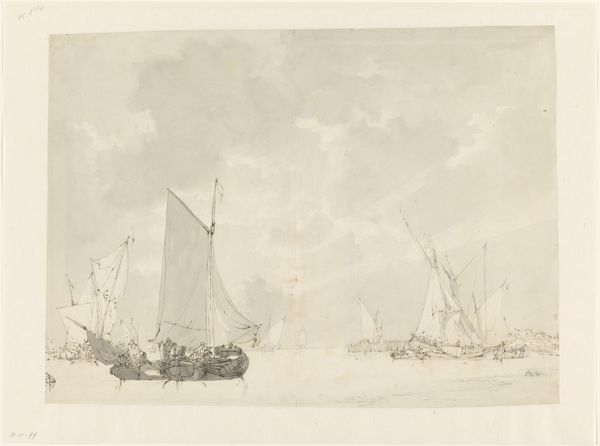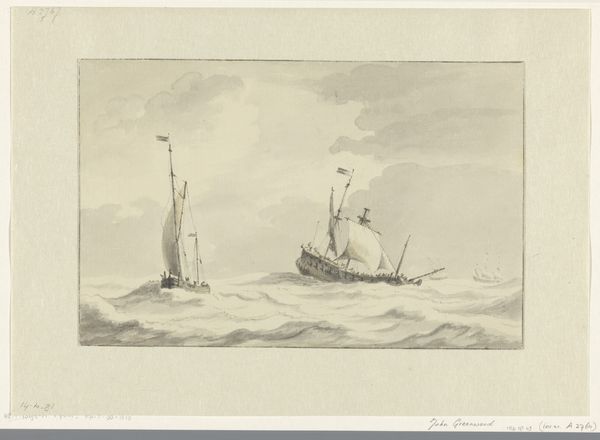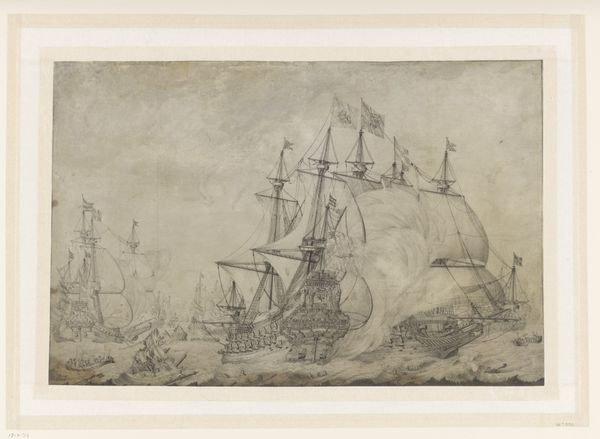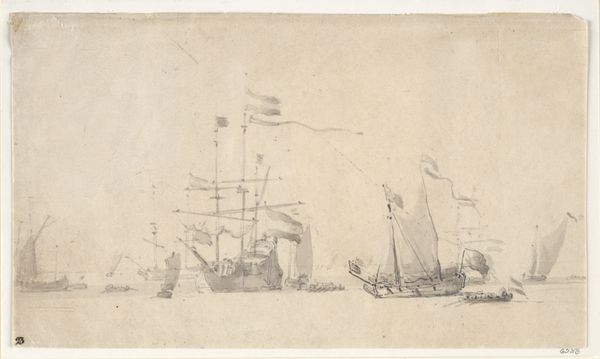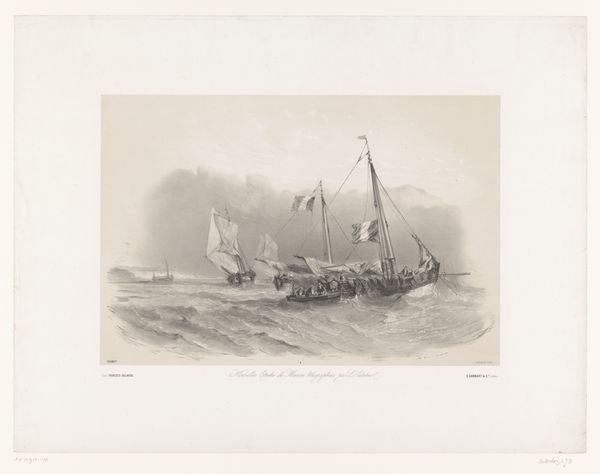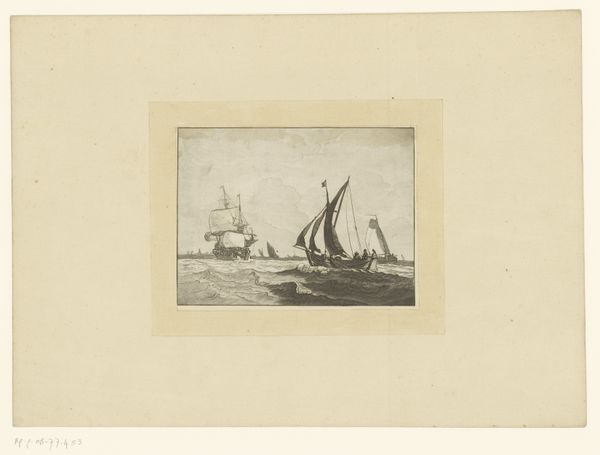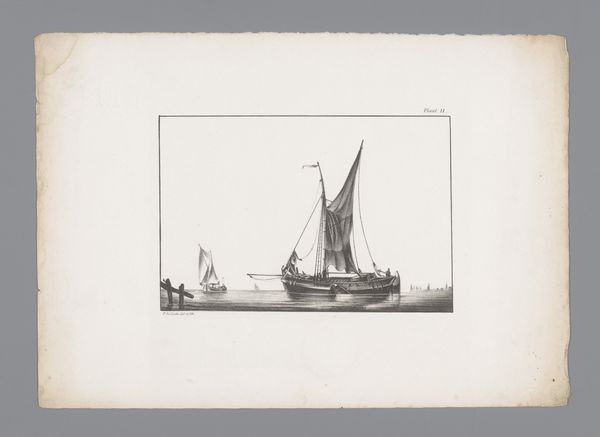
drawing, print, etching, paper, ink
#
drawing
# print
#
etching
#
landscape
#
paper
#
ink
#
romanticism
Dimensions: height 100 mm, width 168 mm
Copyright: Rijks Museum: Open Domain
Curator: It’s impossible to look at Henri Le Hon’s “Stoomschip en zeilschepen op onrustige zee,” created sometime between 1819 and 1872, and not feel a slight twinge of seasickness. What's your immediate impression? Editor: Chaos! Sheer chaos and desperation rendered in ink. The frantic energy almost spills off the paper, you know? It's unsettling but gripping; I can practically feel the spray of the waves. Curator: Absolutely. This etching really encapsulates the Romantic era's fascination with the sublime—nature's overwhelming power versus man’s precarious existence. Notice how the steamship, representing progress, seems just as vulnerable as the old sailing vessels. There's an allegorical tension there. Editor: It's clever to present them together that way. It disrupts our easy assumptions about progress and resilience. And then there’s that dramatic lighting! It really plays up this feeling of uncertainty; what I perceive as the “foamy fingers of death." Are there cultural myths embedded within this image? Curator: The imagery is fascinating when considered within its cultural context. Seascapes are full of traditional symbolic meaning—the ship can represent the soul’s journey, the sea the unconscious mind, the storm inner turmoil, and the hope for safe passage. Here, the artist layers the literal depiction of vessels with these metaphorical dimensions. Editor: I suppose these layers amplify the overall sense of foreboding! So, what do you think Henri Le Hon was trying to communicate? Did he manage to convey an important story, and are there alternative points of view? Curator: Given that he’s positioned these symbols side-by-side, one might read a comment on human hubris. Perhaps the storm doesn't care what kind of ship you are sailing. Editor: I will ponder this perspective next time I encounter stormy seas! It’s incredible how much a simple etching on paper can stir in us. Curator: Yes, and with Romanticism, a lot is evoked with stark emotion using only the most economical methods, often reminding me of Caspar David Friedrich! What are some of your other thoughts after reviewing the scene?
Comments
No comments
Be the first to comment and join the conversation on the ultimate creative platform.
